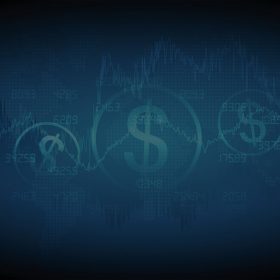Why The Market Lost its Bounce
By Terry Savage on March 02, 2020
The stock market has lost its bounce. After a decade-long stock market boom, investors have been “trained” to buy every dip. They learned the market would soon bounce back and make new highs. But this time is different — at least for a while.
Why? Because there is no obvious rescue this time. I’m not talking about the inability to contain the Corona virus. We all hope it will not spread. I’m talking about the inability to contain the economic impacts of the virus. And that affects not only corporate profits, but our daily lives – in terms of jobs and income.
All of that will have a more lasting impact on the stock market than many anticipate. Here’s why:
1. Stock prices and corporate profits. In the midst of the concern over human lives round the world, it is not cynical to take a realistic look at the impact on business profits. It’s not just global trade; it’s the lack of parts we import for American-made products – from autos to drugs – that will cut into American economic growth. If assembly lines cannot function without parts, there will be layoffs, impactful if temporary.
2. The immobility of fear. This column is written days before it reaches you. But at this writing it seems that the growing fear of contagion will impact plans for major outings – from conventions to sporting events to spring break travel plans. That will that have an impact beyond business profits.
It will likely result in temporary layoffs of people in those service industries related to travel – everything from the guy selling beer at a sporting event to the ticket-takers at museums and theme parks. Those people have families who depend on that income to buy groceries and pay rent. The only thing spreading faster than the virus may be the fear that changes our lifestyle.
3. The Fed and other central banks cannot “save” the markets this time. Despite discussion of concerted effort by central banks to cut rates and increase liquidity, there is little that cutting rates can do right now to stimulate the economy. Lower rates won’t incent businesses to expand, or consumers to buy houses when the economic headlines are bleak. Plus, rates are already so low that any stimulus would be more psychological than practical.
This is not the “end of the world” scenario that many doomsayers are painting. But this is likely to be a different market reaction than most recent market participants have seen. The question is not only “how low” the stock market can go, but “how long” a market decline can last.
Both are hard to predict – and that’s not my job, or yours. As individual investors we must look at our own personal situation, our risk tolerance, our need for liquid cash for living expenses. It’s a Savage Truth that the stock market has never been “easy” — especially when it looks easy. The market always “fools” the greatest number of people (another Savage Truth).
As I write, the market is down about 12 percent. In my lifetime I have seen three bear markets that approached or exceeded 50 percent declines — in 1973-74; the 2000 dot-com bubble burst; and the 2008-2009 financial crisis. I’ve learned to respect the fact that the market can go down –and stay down – for longer than most people expect. I’m reminded that the Dow Jones Industrial Average “soared” over 1,000 in 1972. Then and after collapsing to below 600, it was still below 1,000 a decade later in 1982!
This is not a prediction. The simple fact is that despite those bear markets, over the long run – at least 20 years – a diversified stock portfolio with dividends reinvested has always given a positive return, even adjusted for inflation. So, if you’re not in or near retirement, please do keep investing on your regular schedule of 40l(k) or IRA contributions. Retirement is a long way off.
But if you’re near or in retirement, this is not a question of predicting market direction or timing. It’s a question of the impact on your life. And that’s The Savage Truth.



